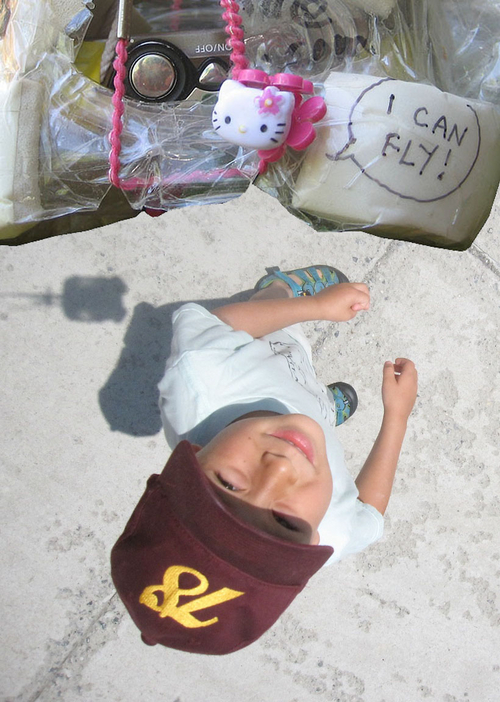The Gowanus Canal Conservancy has been using kite and balloon photographs to map historic buried stream beds and opportunities for rain filter planting on the edges of a Superfund site in Brooklyn, New York.
The Conservancy uses the kite photographs to create a record of their planting and activities during community "Clean and Green" events.
Last Sunday 21 October, they held a free City sponsored Tree adoption program, where local residents could come pick up trees to help rebuild the urban forest of the Gowanus watershed.
This event included a kite photography workshop with Saint John's University students and local children who had come to help clean up the Canal edges.
The photographs the volunteers took were intended to capture the community sponsored Compost Gowanus event, where volunteers help recycle restaurant waste to improve Canal soils, photograph the health of existing planting, and capture the creation of new gardens along the heavily polluted Gowanus Canal.
The kite mounted Hello Kitty 10 megapixel SD880 Canon Camera ($50) took 677 photos (2.52 Gigabytes worth) using a CHDK (Canon Hack Development Kit) script loaded on the SIM card that allowed the camera to take pictures every 10 seconds while up in the air.
While sorting the pictures 4 hours later, it was noticed that the students had also captured images of a major milky plume coming from an adjacent construction site, being redeveloped for a Whole Foods shopping center and a public waterfront park. Adjacent DEP oxygenation floating tubes in the Canal also feed this area, but the discoloration did not match the typical bubbling often seen by canoers.
The building contractors for Whole Foods were immediately notified of the potential spill that morning, as was New York State Department of Environmental Conservation (NYSDEC), responsible for preventing water pollution. The Environmental Protection Agency (USEPA) was also alerted, as they were carrying out an extensive pipe outflow and pollution mapping survey to guide the Gowanus Canal Superfund Cleanup. This particular outflow had been missed in their survey as it had been camouflaged behind a welded steel plate.
What is interesting about the kite photography, is that the outflow had been flagged on prior Grassroots Mapping aerials taken by home made infrared cameras flown from balloons via Gowanus Dredgers canoes.
Grassroots mappers had debated how to interpret those infrared images, with some seeing a clearly visible plume, while others arguing that there was no plume, as this location was a known outflow of fresh water, and that what was being seen on the aerial was a coincidental floating layer of sewage scum floatables, formed by the tidal currents.
The same streaking was not seen at other photographed points where historical streams were known still flow into the Canal. This healthy scientific debate prompted one of Grassroots mappers to canoe out to the outflow and stick his camera under steel plate at low tide to photograph the clean flowing water.
Subsequent research established that this flowing water was a surviving remnant of Denton's Pond, a large tidal pond buried in the 1850s during the construction of the Gowanus Canal. This pond was America's first recorded oyster farm, growing the famed Gowanus oysters, a renown delicacy growing up to a foot long.
The historic pond reappeared briefly during the removal of toxic soils from the site during its cleanup program.
With the new mindset of working with natural systems, rather than fighting against them, there is an opportunity here for designers to take advantage of a unique site feature to manage 100% of the storm water on site.
A more creative water sensitive landscape design for their parking lot could consider daylighting historic water features, improving local water quality, recreating ecological wetland habitats - and making water habitat food cycles whole again.
The future public waterfront park being developed by Whole Foods on the site will be a welcome community asset.
You can check out more pictures taken by local Brooklyn grassroots mappers here: https://www.flickr.com/photos/51802375@N04/sets/72157629561924342/
The NYSDEC, NYCDEP and EPA pollution control agencies promptly sent teams to resolve the photographed potential pollution problem, an example of constructive community dialogue helped along by fun rapid response grassroots mapping tools.
















0 Comments
Login to comment.